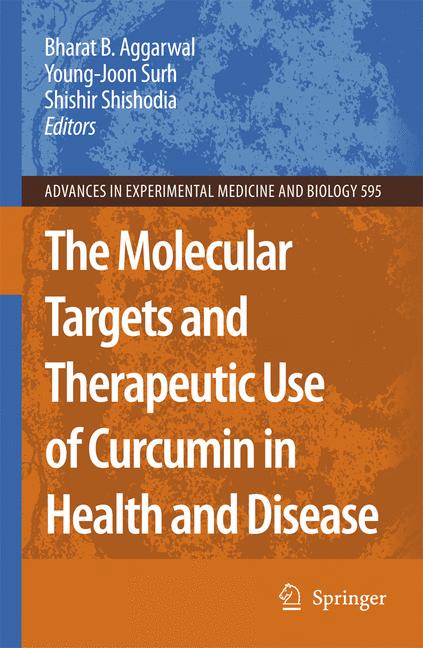| Chapter title |
NEUROPROTECTIVE EFFECTS OF CURCUMIN
|
|---|---|
| Chapter number | 8 |
| Book title |
The Molecular Targets and Therapeutic Uses of Curcumin in Health and Disease
|
| Published in |
Advances in experimental medicine and biology, December 2011
|
| DOI | 10.1007/978-0-387-46401-5_8 |
| Pubmed ID | |
| Book ISBNs |
978-0-387-46400-8, 978-0-387-46401-5
|
| Authors |
Greg M. Cole, Bruce Teter, Sally A. Frautschy, Cole, Greg M., Teter, Bruce, Frautschy, Sally A. |
| Editors |
Bharat B. Aggarwal Ph.D., Young-Joon Surh Ph.D., Shishir Shishodia Ph.D. |
| Abstract |
Neurodegenerative diseases result in the loss of functional neurons and synapses. Although future stem cell therapies offer some hope, current treatments for most of these diseases are less than adequate and ourbest hope is to prevent these devastating diseases. Neuroprotective approaches work best prior to the initiation of damage, suggesting that some safe and effective prophylaxis would be highly desirable. Curcumin has an outstanding safety profile and a number of pleiotropic actions with potential for neuroprotective efficacy, including anti-inflammatory, antioxidant, and anti-protein-aggregate activities. These can be achieved at submicromolar levels. Curcumin's dose-response curves are strongly dose dependent and often biphasic so that in vitro data need to be cautiously interpreted; many effects might not be achievable in target tissues in vivo with oral dosing. However, despite concerns about poor oral bioavailability, curcumin has at least 10 known neuroprotective actions and many of these might be realized in vivo. Indeed, accumulating cell culture and animal model data show that dietary curcumin is a strong candidate for use in the prevention or treatment of major disabling age-related neurodegenerative diseases like Alzheimer's, Parkinson's, and stroke. Promising results have already led to ongoing pilot clinical trials. |
X Demographics
Geographical breakdown
| Country | Count | As % |
|---|---|---|
| United States | 4 | 21% |
| United Kingdom | 1 | 5% |
| Uganda | 1 | 5% |
| Unknown | 13 | 68% |
Demographic breakdown
| Type | Count | As % |
|---|---|---|
| Members of the public | 12 | 63% |
| Practitioners (doctors, other healthcare professionals) | 5 | 26% |
| Scientists | 2 | 11% |
Mendeley readers
Geographical breakdown
| Country | Count | As % |
|---|---|---|
| United States | 3 | <1% |
| Australia | 1 | <1% |
| Malaysia | 1 | <1% |
| Spain | 1 | <1% |
| Mexico | 1 | <1% |
| Unknown | 364 | 98% |
Demographic breakdown
| Readers by professional status | Count | As % |
|---|---|---|
| Student > Ph. D. Student | 57 | 15% |
| Student > Master | 56 | 15% |
| Student > Bachelor | 45 | 12% |
| Researcher | 30 | 8% |
| Student > Doctoral Student | 19 | 5% |
| Other | 68 | 18% |
| Unknown | 96 | 26% |
| Readers by discipline | Count | As % |
|---|---|---|
| Agricultural and Biological Sciences | 57 | 15% |
| Pharmacology, Toxicology and Pharmaceutical Science | 44 | 12% |
| Medicine and Dentistry | 42 | 11% |
| Biochemistry, Genetics and Molecular Biology | 36 | 10% |
| Neuroscience | 25 | 7% |
| Other | 57 | 15% |
| Unknown | 110 | 30% |
